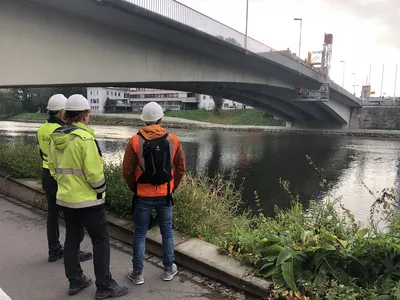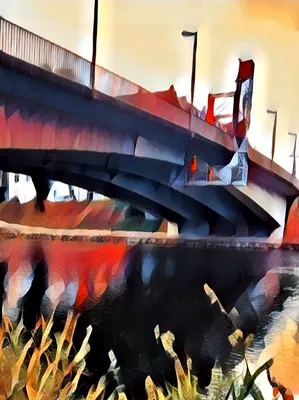About the image
The image shows the instrumentation of the Gänstorbrücke in Ulm with a total of 30 ultrasonic sensors.
In September 2020, ten ultrasonic sensors were successfully installed in the tension member at the Gänstorbrücke in Ulm, Germany. Regular measurements with mounted and embedded sensors will be used to detect changes in the structure using coda wave interferometry. Furthermore, 20 sensors were embedded in the middle of the bridge. The research group intends to gain further insights into the improvement of damage detection and differentiation with coda waves on real structures.
What is the connection between this challenge and the research unit CoDA?
The aim of the research unit CoDA is to investigate the application of a novel method for the assessment of the safety and durability of reinforced concrete structures.
The method uses ultrasound-based coda wave interferometry (CWI). The term coda thereby refers to the late part of the ultrasonic signal, which contains information from multiple scattered waves. The scattered waves pass extensively through the material (in this case, concrete), thus the coda is more sensitive to material changes than the direct wave. In CWI, two ultrasonic waves recorded at different times (signal and reference) are compared. Like in the challenge, the method does not characterize the current state, but rather a comparison of two states. Due to the high sensitivity of the multiple scattered waves, even small structural changes or changes in temperature and moisture content as well as load changes can be registered.
More about our research project under this link: Concrete Damage Assessment by CODA Waves


